The Major Religions In India
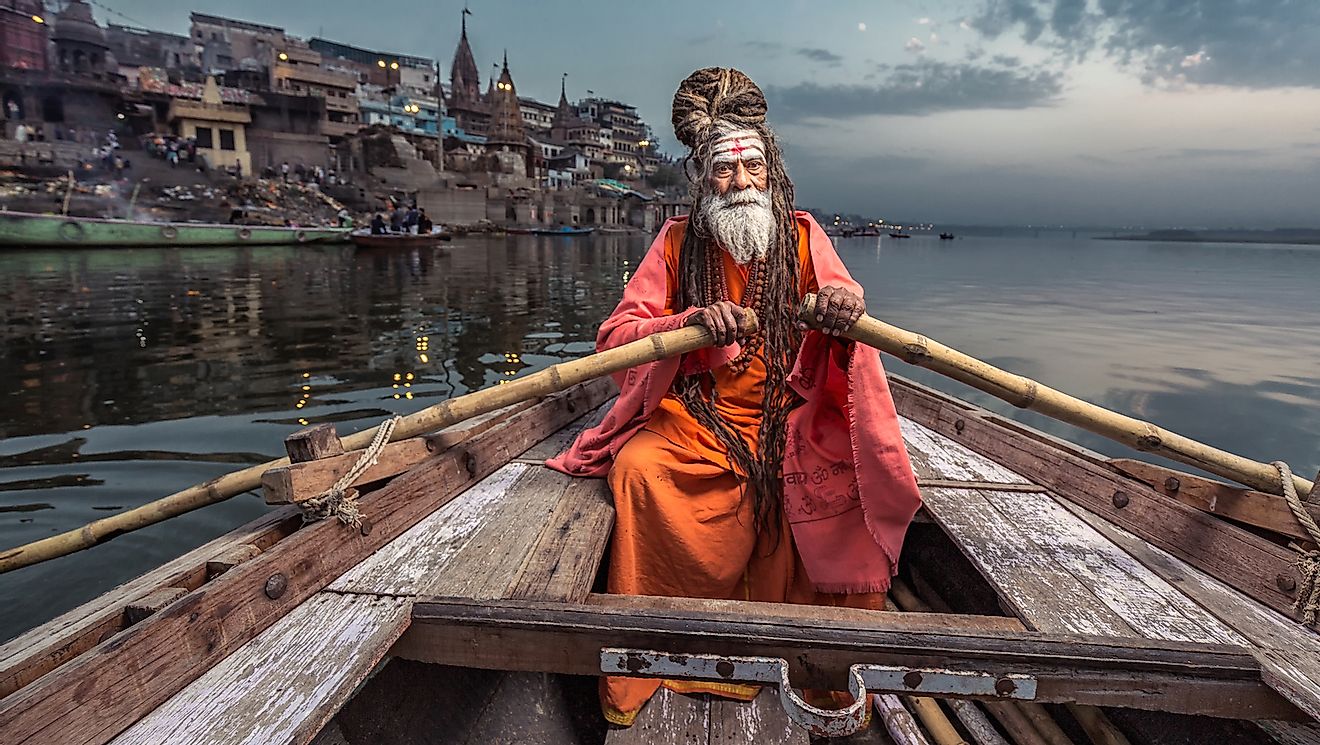
- Approximately 1.2 billion people in the world currently practice Hinduism, with 95 percent of that total living in India.
- Christianity first came to India around 52 CE when Thomas, one of the Twelve Apostles of Jesus Christ, first visited the country.
- Sikhism originated in Punjab, a state located in northern India, around the late 1400s.
- By 2050, the Muslim population in India will exceed 310 million, making it the largest Muslim population in the world.
As of 2020, India has an approximate population of 1.32 billion people. It is the country with the second-largest population in the world after China. With so many people, India has become a tapestry of different cultures and religions over the centuries. Some religions, such as Sikhism, even originated there. Religious persecution still exists, but the Indian constitution recognizes religion as a fundamental right, meaning citizens are free to follow whichever faith they choose. From Hinduism to Zoroastrianism, the following article breaks down all the major religions currently practiced in India.
1. Hinduism
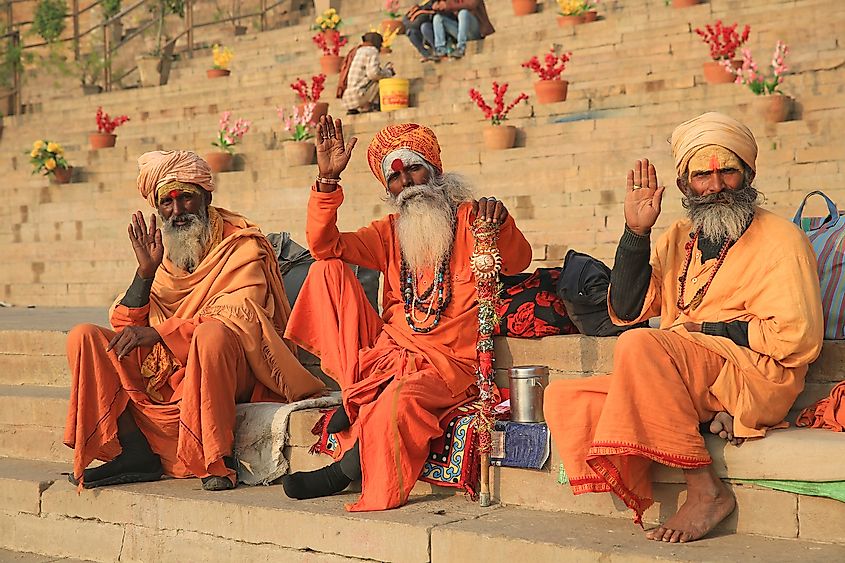
Approximately 1.2 billion people in the world currently practice Hinduism, with 95 percent living in India. Because of this high number, it is easily the most popular religion in the region, with roughly 79.8 percent of India’s total population self-identifying as Hindu.
Experts have dated Hinduism as far back as 4,000 years. Even though many link it to the early Indus Valley Civilization, it does not have a particular beginning, but instead has been founded over many years. Based on various practices and philosophies, it is more of a way of life than a religion in the traditional sense. As a general rule, Hindus uphold themselves to a strict moral code, believing in such concepts as reincarnation and karma.
Most Hindus are henotheistic, which means they worship a single god—in this case, Brahman—but they recognize the existence of other deities. In addition, they do not eat meat such as beef as numerous animals, particularly cows, are considered sacred.
Hinduism shares many ties with other Indian religions found on this list, including Buddhism and Sikhism.
2. Islam
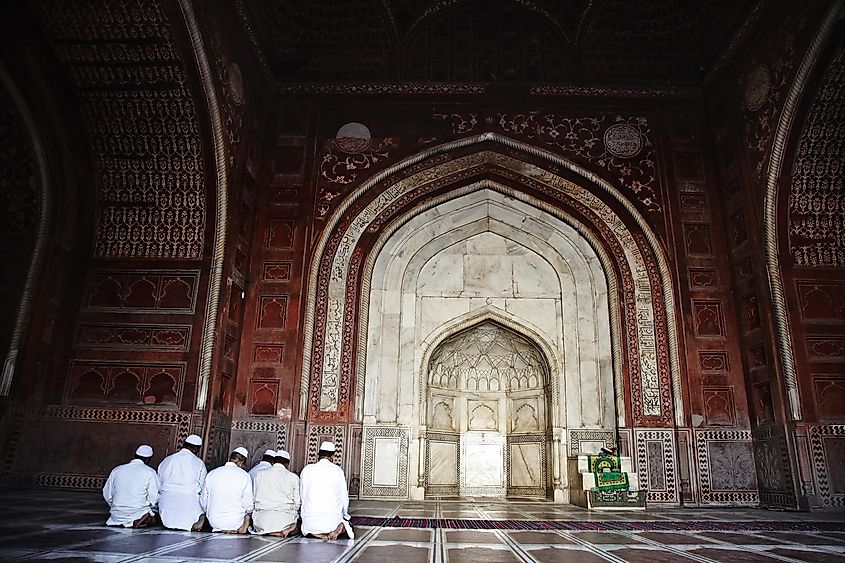
Not only is Islam the second-largest religion in the world with 1.8 billion followers, it is also the second most popular religion in India. Approximately 14.2 percent of its total population practice it. This is a significant drop from those devoted to Hinduism, but it still equates to roughly 172 million people. In fact, India has the third-largest population of Muslims in the world, after Indonesia and Pakistan.
Even though it is much older, experts date Islam back to the 7th century. It first originated in Mecca—a city in modern-day Saudi Arabia—during the life of the prophet Muhammad. Unlike Hinduism, Islam is a monotheistic religion. It preaches the word of Allah—or God—which was originally revealed to Muhammad through an angel messenger.
It became a dominant religion in India around the same time when Arab traders first journeyed to the country. With these traders came missionaries who managed to convert various Indian communities to Islam. The building of mosques and further missionary work solidified Islam as a permanent addition to India’s religious melting pot.
3. Christianity

With roughly 2.3 billion followers, Christianity is the largest religion in the world. In India, it is the third most popular religion. Approximately 2.3 percent of its total population adheres to Christian beliefs.
Similar to Islam, Christianity is a monotheistic religion, but God as an entity is considered to be built up of three components: the father, the son, and the Holy Spirit. The son refers to Jesus Christ who died on the cross for our sins, only to be resurrected three days later. Christians believe in the Second Coming, that one day Jesus will return to Earth. This is described in the Bible, the most sacred Christian text, which is cleanly divided into two halves: the Old and New Testaments.
Christianity first came to India around 52 CE when Thomas the Apostle first visited the country. As one of the Twelve Apostles of Jesus Christ, Thomas established several congregations and converted many Jews and Hindus. Continued missionary work throughout the centuries bolstered his early efforts.
4. Sikhism
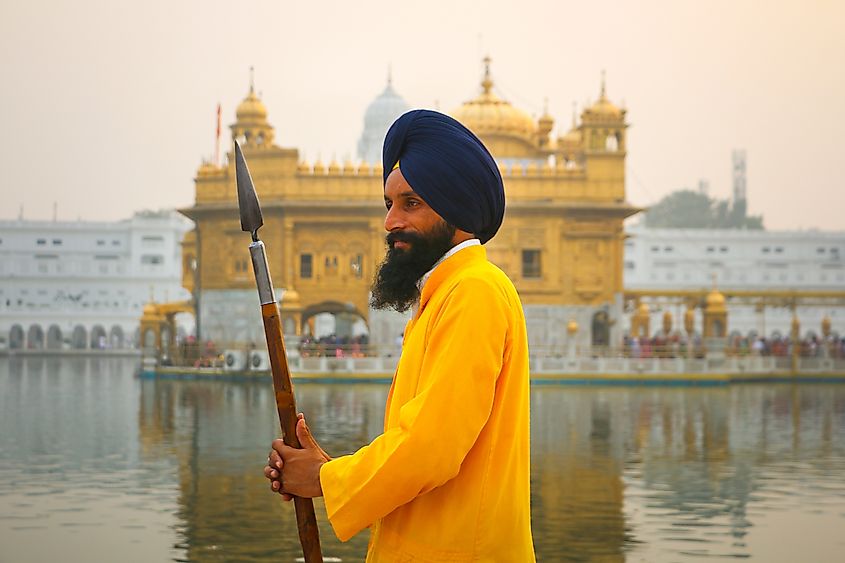
Sikhism is the fifth most popular religion in the world, with approximately 25 million followers. While they make up only 1.7 percent of India’s total population, the country has the highest number of Sikhs anywhere. Roughly 77 percent of this 1.7 reside in Punjab, a state located in northern India.
Perhaps unsurprisingly, Sikhism originated in Punjab around the late 1400s. It is primarily based on the spiritual teachings of Guru Nanak and the nine other gurus that continued his work. Similar to Hinduism, it is considered a philosophy just as much as a religion. While many Sikhs deny the following claim, scholars argue that Sikhism first developed within Hinduism.
It is a monotheistic religion that preaches equality. Sikhs believes that if you lead a good life, you will be rewarded by being with God after death, but if not, you will be reborn and forced to live again. Interestingly, there is no one day of the week assigned for worship, unlike Christianity that upholds the belief that Sunday is the Lord’s day.
5. Other

Approximately 0.9 percent of India’s total population abides by a faith that does not appear on this list. Such religions include Judaism and the Bahá’í Faith.
Despite its small following, Judaism was one of the first foreign religions in India. It is generally believed that the first Jews settled along the Malabar coast. They were a part of the Ten Lost Tribes that were forced out of the Kingdom of Israel after the Assyrians conquered the land in the 8th century. In India, they were free to practice their faith, while simultaneously adapting to the local culture. Today, there are anywhere between 5,000 and 7,000 Jews in India.
The Bahá’í Faith is a relatively new religion, founded in Iran in the mid-19th century. It champions the unity of all religions and people, and preaches the abolition of prejudice. It made its way into India around the time of its own inception when Jamal Effendi, a devoted follower, arrived to spread the word. Today, there are roughly 2.2 million Bahá’ís.
6. Buddhism
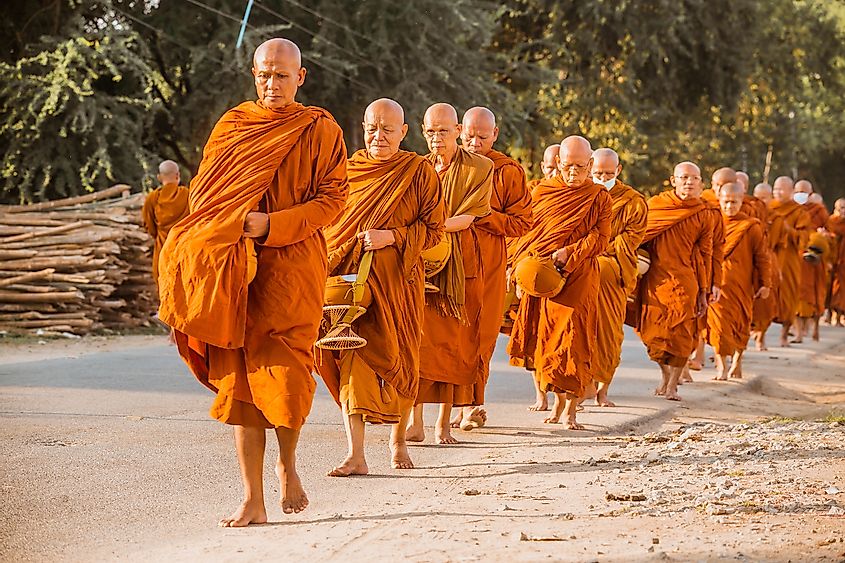
Buddhist monks in Bodh Gaya, India. Image credit: N E O S i A M/Shutterstock.com
With approximately 535 million followers, eight to ten percent of the world’s population identify as Buddhist. While Buddhism was founded in India roughly 2,500 years ago, it has become more popular in other Asian countries like Cambodia and Thailand. Today, 0.7 percent of India’s total population adhere to Buddhist beliefs.
Buddhism found its roots with Siddhartha Gautama—the Buddha—in the 5th century BCE once he had achieved an enlightened, spiritual state. Buddha is not considered a god; in fact, Buddhists do not believe in any single deity. Rather, they channel like energy on achieving inner peace, much like Buddha. Because of this, meditation is a very common practice.
Buddhism as a religion and a general way of life preaches selflessness and tolerance of others. It is continuously evolving and embraces familiar concepts of reincarnation and karma.
7. Jainism
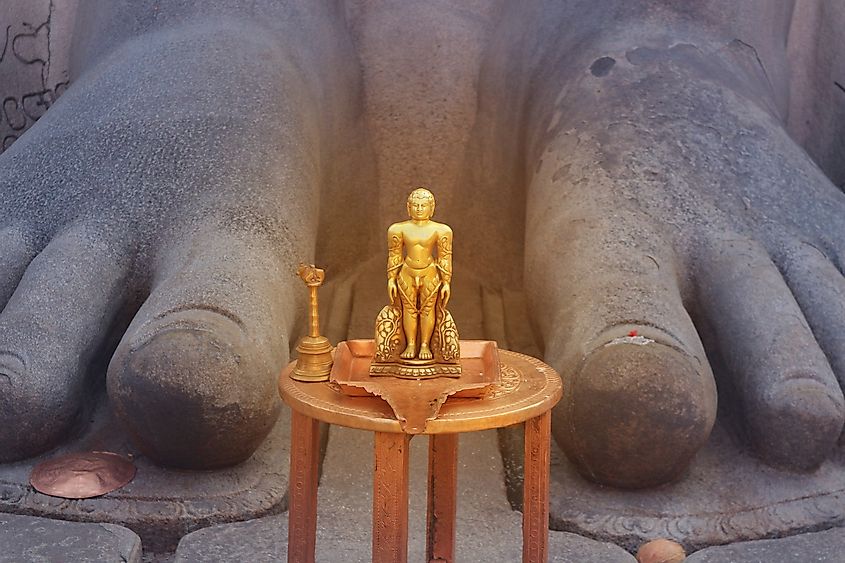
There are currently six million practicing Jains in the world. Roughly 4.5 of this six million live in India, making up 0.4 percent of the country’s overall population.
Even though Jainism always existed according to its official doctrine, experts have traced its beginnings back to the Indus Valley Civilization. In short, it is a religion based purely on selflessness. It preaches that the path to inner peace is through compassion and the concern of others. It is strict in its non-violent philosophies.
Similar to Buddhists, Jains do not believe in a particular god. They do, however, believe that all animals and plants, in addition to humans, have souls and therefore, should be treated with respect. They also believe in reincarnation; to achieve true liberation is to break from this cycle and have the soul exist in a state of eternal bliss.
8. Zoroastrianism

Zoroastrianism is considered one of the world’s oldest religions. Recent estimates claim that there are no more than 200,000 Zoroastrians left, with the majority living in Iran and India. Even so, they only make up roughly 0.1 percent of the latter’s overall population.
The religion is named after the prophet Zoroaster, although it is unclear when exactly he lived. Zoroaster had a vision of a supreme entity, a benevolent being he referred to as Ahura Mazda. From that moment, Zoroastrianism developed into a religion centered largely around the dualistic concept of good versus evil. Considering its ancient beginnings, many experts argue that it likely influenced other major religions, including Christianity and Islam.
Zoroastrianism originated in Persia approximately 4,000 years ago. Zoroastrian refugees were forced to flee the region during the Muslim conquest of Iran in the 7th century. To escape persecution, many of their numbers found sanctuary in India.
Future Religious Trends
The vast majority of the world’s Hindus currently live in India. This is not expected to change anytime soon. In fact, its overall population is projected to grow, with 1.3 billion Hindus living in the country as of 2050, a number that is higher than the current number of Hindus living throughout the world.
Over the next thirty years, the Muslim population is expected to grow even faster than Hindus. They will remain a religious minority, but by 2050, their population in India will exceed 310 million, making it the largest Muslim population in the world—roughly eleven percent of the global total.
Similar reports project changes among other religions, but these are relatively minor in comparison to the growth of both Hinduism and Islam. Nonetheless, India is likely to remain a religiously diverse Asian country for years to come.
The Major Religions In India
| Rank | Religion | Population (%) |
|---|---|---|
| 1 | Hinduism | 79.8 |
| 2 | Islam | 14.2 |
| 3 | Christianity | 2.3 |
| 4 | Sikhism | 1.7 |
| 5 | Other | 0.9 |
| 6 | Buddhism | 0.7 |
| 7 | Jainism | 0.4 |
| 8 | Zoroastrianism | 0.1 |







